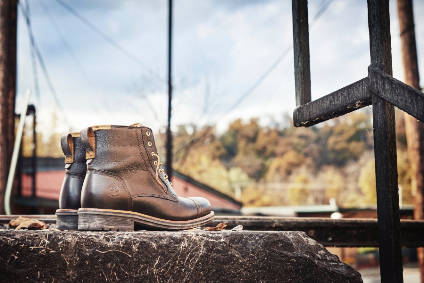
Outdoor lifestyle brand Timberland has set out a number of goals to ensure its products are net positive by 2030 through circular design and more sustainable sourcing sourcing.
In pursuit of its net positive vision, the company is targetting 100% of products to be designed for circularity, and 100% of natural materials to be sourced from regenerative agriculture in ten years time.

Discover B2B Marketing That Performs
Combine business intelligence and editorial excellence to reach engaged professionals across 36 leading media platforms.
“At Timberland, we believe a greener future is a better future. We also understand that the creation of our products has a significant environmental impact,” says Colleen Vien, director of sustainability for Timberland. “For decades we’ve worked hard to minimise this impact, but it’s time to do better than that.
“Imagine a boot that actually puts more carbon back into the land than was emitted during production. By following nature’s lead, and focusing on circular design and regenerative agriculture, we believe we can tip the scales to have a net positive impact on nature. We are incredibly excited about the journey ahead, and hope to inspire the industry as a whole to work together and change the trajectory of our collective future.”
Timberland says it will source all its natural materials through regenerative agriculture. This method allow animals to roam and graze in their natural patterns, giving the land a chance to rest and heal. And they ensure a variety of crops, replicating the diversity found in nature.
These practices enable the land to pull carbon out of the atmosphere and efficiently store it in the ground, leading to healthy, hydrated, fertile soil – and ultimately, net positive impacts for the land and the farmers.

US Tariffs are shifting - will you react or anticipate?
Don’t let policy changes catch you off guard. Stay proactive with real-time data and expert analysis.
By GlobalDataOn the front end, Timberland’s products will be made using materials that would have otherwise gone to waste (e.g., recycled plastic bottles, recycled/scrap wool, recycled/scrap leather). Products will also be designed to be recyclable at “end of life,” so they can be disassembled and made into something new.
The company is also working to build a robust regenerative leather supply chain in the US Australia, and Brazil. The brand recently announced a partnership with the Savory Institute to fund research into the tangible benefits of regenerative agricultural practices. This autumn Timberland launches its first collection of boots made using Regenerative Leather, with plans to scale significantly in the coming seasons.
Beyond leather, Timberland is working with pioneering regenerative farmers to pilot new regenerative rubber, cotton, wool, and sugarcane supply chains in pursuit of its 2030 goals.
“In and of itself, nature is balanced. Ecosystems work together in perfect harmony,” said Vien. “Modern civilization challenges this state, but as we’ve seen time and again, nature has the innate power to restore and regenerate itself when given the chance. That’s our ultimate vision for 2030 – to get carbon back in the soil where it belongs, and give back more than we take.”





